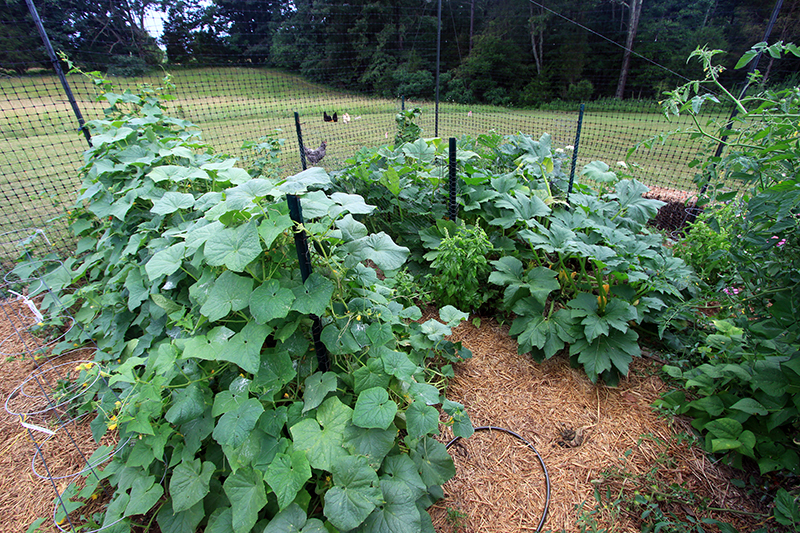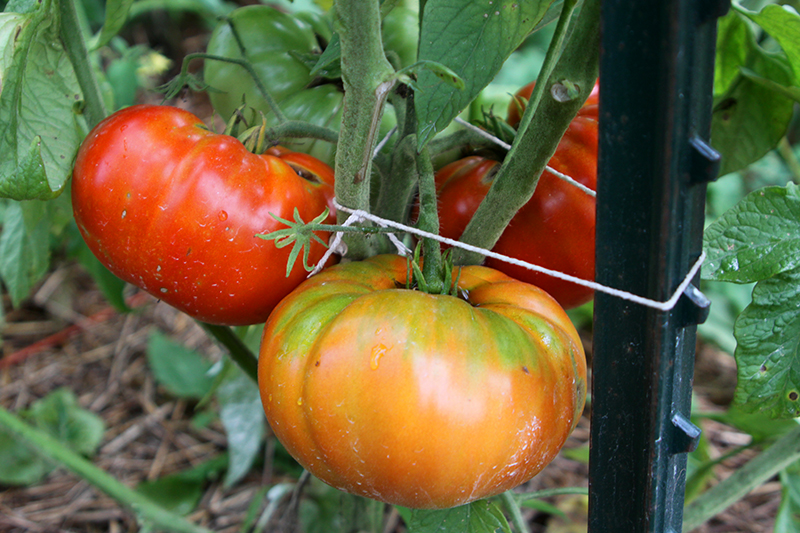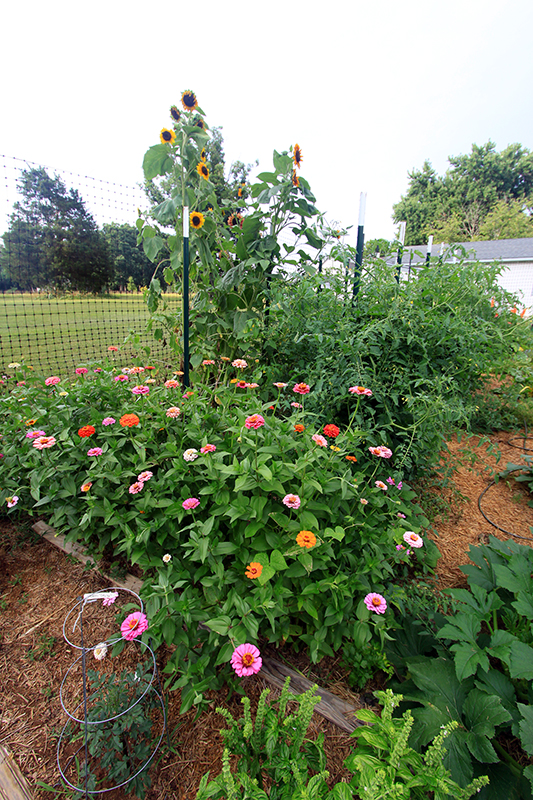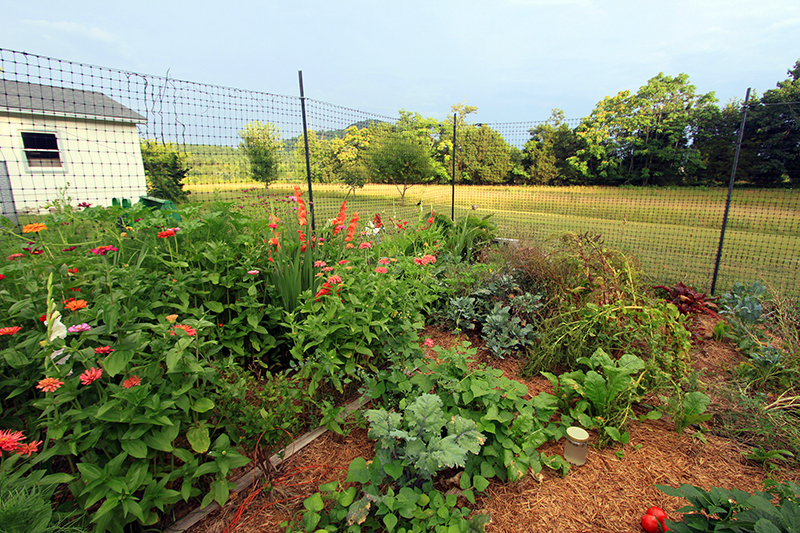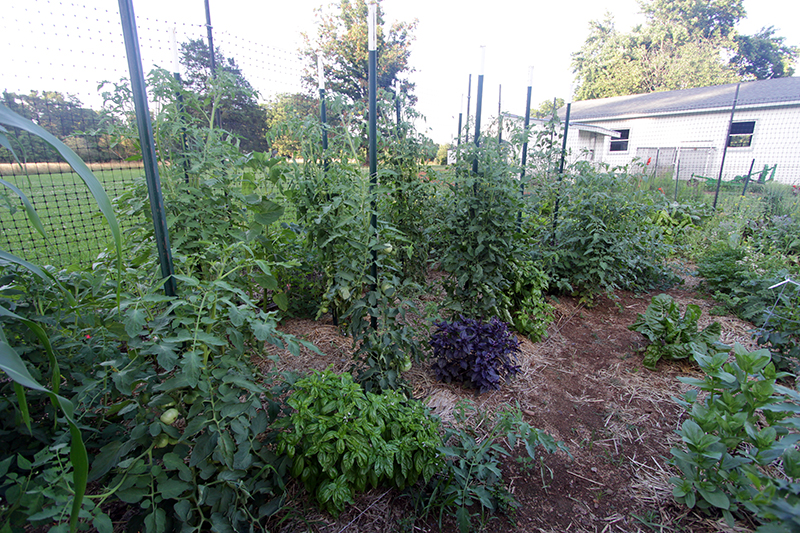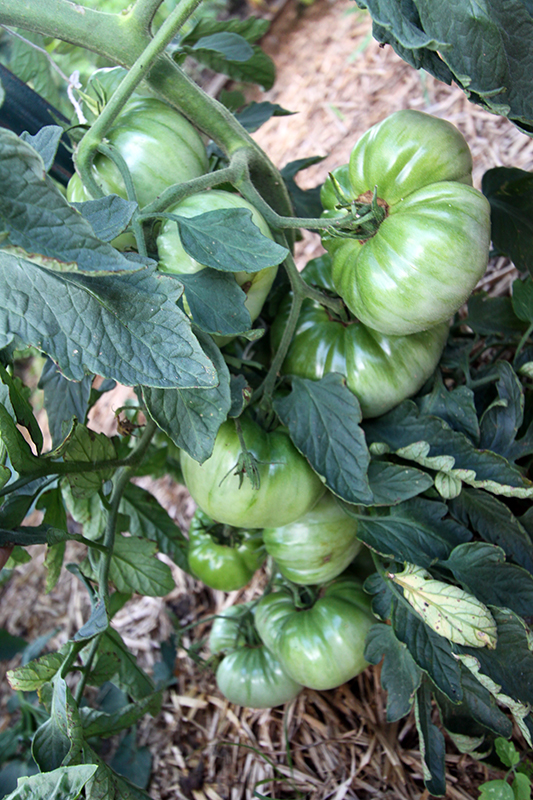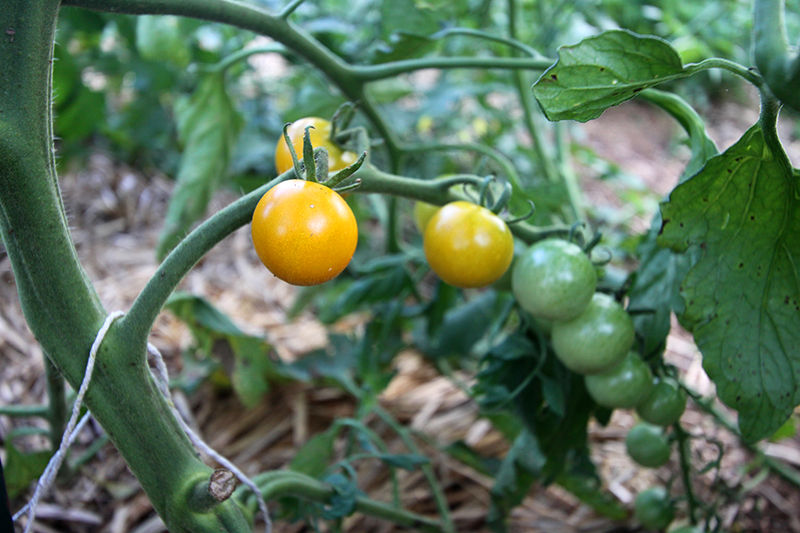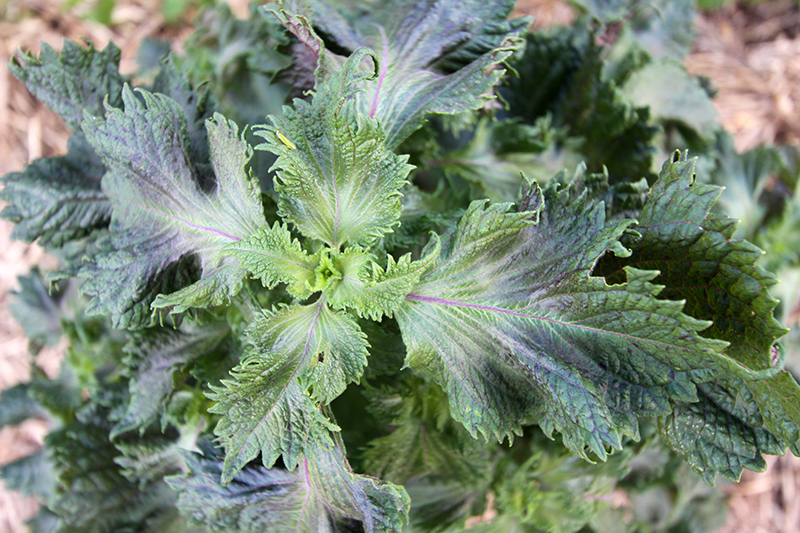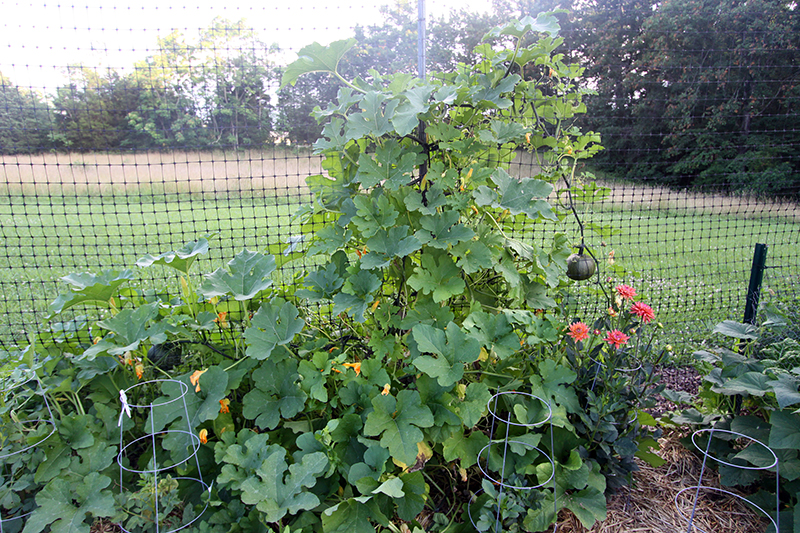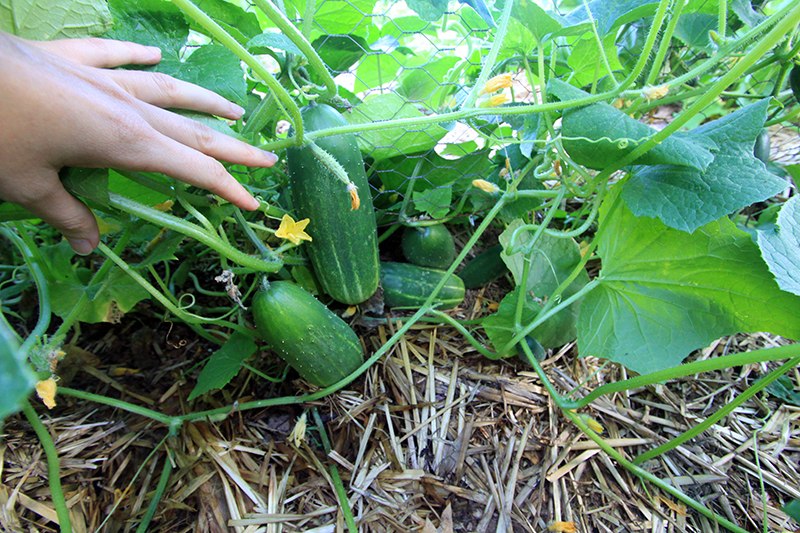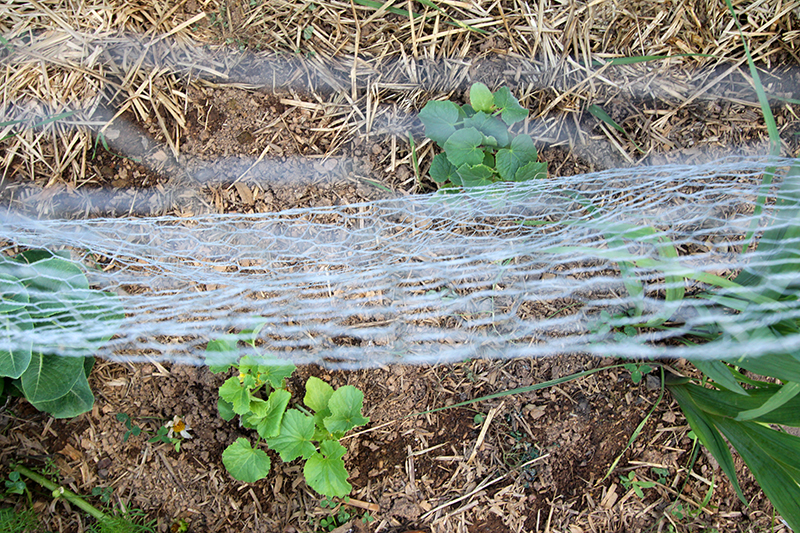You’d be forgiven for thinking the name of this blog should be Bugs, Birds and Buck Mountain. Posting has been heavy on the natural history lately, I suppose because I want to keep a record of the creatures that share this land with me. That, and baby birds are just cool.
But fear not—there is still some farming happening at Bonafide Farm, and as it’s been months since the last vegetable garden update that’s what we’ll do today.
I will be the first to admit that I am not in love with this garden this year, for several reasons. First, when I planted it in April I was pretty sure I would be moving away from the farm at the end of summer and didn’t think too seriously about where I put things. Second, the overwintered greens took up a vast amount of valuable real estate, and though I enjoyed them as we emerged from winter we had a long, cool spring and I didn’t get to pull them out to use their space for something else until just now, when it’s really too hot and dry to get much going. Finally, my veg garden is just too small, and plants are packed too tightly for all of them to get the sunlight they need to thrive. I hate working around them when they are so thick, always worrying about brushing against a wheel bug or hidden wasp nest.
I haven’t yet expanded the garden because that requires another goat rope of getting huge posts, pounding them in, digging in chicken wire around the perimeter, etc., not to mention beginning to improve the soil by shoveling tractor buckets of compost, all of which is doable but after having spent four painful months and thousands of dollars on a rotator cuff injury this winter I am leery of straining my still-fragile shoulder.
So, the garden is what it is. It’s not the most organized or pretty but it’s putting out vegetables and flowers and that’s all I suppose it really has to do. There have been some surprises this season. The most notable is that my squash, which usually falls victim to squash bugs around the time it’s ready to harvest, is chugging along just fine. It’s in the photo above, to the right of the massive cucumber installation. I don’t know if the polar vortex is behind this lower squash bug population this year, or if it has to do with moving the squash to a new location in the garden. I do know that for the first time ever I am using an “organic” pyrethrin dust, which I applied when the plants were young and every so often now. I don’t think that’s entirely the reason, though, as it’s a contact insecticide, not really a repellant, and I just haven’t seen much evidence of squash bugs or their eggs. Of course I may be totally jinxing myself by even writing this. The irony is I planted the squash in amongst other things, anticipating that it would be dead by now and the other plants could take over. But that’s not how it’s turning out, and I suppose I shouldn’t be complaining about something living instead of dying!
Again I am overrun with cucumbers. I think it’s because when you buy little two-leafed cuke seedlings they come about eight to a pot so it’s easy to overplant. Nobody needs this many cucumbers. But again, like with the squash, I expected these plants to have fallen to the cucumber beetles by now and they haven’t. The chickens are getting a lot of cucumbers.
The tomatoes are all now mostly taller than I, and I am trying a new technique with them in that I did not pinch off any suckers. All my life I was of the “pinch the suckers” school of tomato growing, but this year I thought I’d let them go and see what happened. What happened was massive plants that I tried to tie up last night, which required full-body hugging the plants as I collected each vine near the post. I guess tomatoes need love too. Even planted on generous 36″ centers, the plants are growing together making harvest hard. But I did pick my first big tomatoes last night, with “Early Girl” for the win, and others are right behind. That’s “Brandywine” above, nice and big. The plants are gorgeous and healthy, with just the tiniest bit of manageable fungus-related yellowing near the base.
I have a few rows of cutting flowers—zinnias and cosmos, and some volunteer gladiolus that I tried to dig out this spring but obviously I didn’t manage to get all the bulbs. There are lots of surprises that germinated from years’ past and I just let go, such as random green beans, unidentified greens, the sunflowers above, and a very mysterious white squash rambling through the cosmos. Like I said, kind of a mess.
But here we are, mid-July, and this is what I have to work with. The summer is going so fast that I know it will be only a few more weeks before everything goes round the bend and starts its late-summer decline.
And the nice thing about gardening is that each year you get a do-over. Maybe this fall I will get the garden expanded and then have fresh land to cultivate next year. I really want to put in a ton of perennial fruits and vegetables that need space to mature, such as berry bushes, asparagus, rhubarb, and strawberries, so that’s a good incentive to get out the dreaded t-post driver.


